1. Busan: Traditional Food Cuisine.
Busan, a vibrant megacity in South Korea, is also Jimin and Jungkook’s birthplace. Growing up in Busan, his birthplace has played a significant part in shaping his identity and cultural expression, and he proudly represents his roots as a Busan native.
Table of Contents
Significance of Traditional Food in Busan Culture
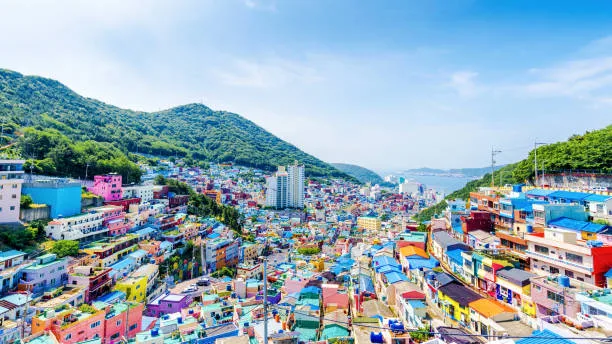
Busan’s traditional food is a pleasurable and rich culinary heritage of mouthwatering traditional foods and flavors, with a blending of fresh seafood, savory broths, and unique constituents. Busan offers fascinating road foods and traditional coffee. So what are you staying for? Get ready to indulge yourself in milmyeon, dwaeji gukbap, eomuk, and numerous other culinary delights.
Busan’s Traditional Food Staples
Ganjang Gejang

A Delicacy of Marinated Raw Crabs: This dish is made with marinated raw crabs, using soy sauce(ganjang) as the main seasoning, it is known for its unique flavors and textures.
Chungmu Gimbap
Originating from the city of Chungmu (now Tongyeong) Chungmu gimbap is a dish that consists of a seaweed-wrapped rice roll filled with various ingredients, and the unique size and shape set it apart, known for its thin and long rolls. It has a thicker layer of rice with fillings of pickled radish, spinach, carrots, danmuji (yellow radish), ham, or fish cake.

Where to eat: Gukje Market Food Street, Chungmu Gimbap Street
Dwaeji Gukbap

Pork soup with rice is the most comforting and beloved in Busan and its people. This flavorful pork broth is served with rice-tender pork slices and Kimchi. Seomyeon area where you will find Dwaeji Gukbap Alley filled with restaurants serving it.
Where to Eat:Eonyang Gukbap Street in Busan
Milmyeon
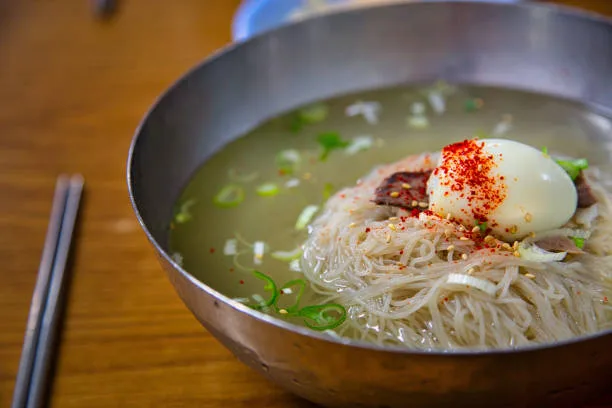
Choryang-dong Milmyeon is a street filled with small restaurants specializing in milmyeon. This beloved noodle dish originated in Busan city. It’s a combination of chewy wheat noodles with refreshing broth and toppings. Noodles are served cold, with the savory broth of beef or pork, and seasoned with soy sauce. During the hot summer months, Milmyeon is mostly enjoyed.
Where to eat: Milmyeon Alley in the central area of Busan, particularly in the neighborhood of Myeongnyun-dong.
Dongnae Pajeon

Dongnae Pajeon is a savory Korean pancake originating from the Dongnae district of Busan. It features a crispy exterior and a soft, chewy interior filled with a variety of ingredients such as green onions, seafood, or kimchi. The batter is typically made from a mixture of flour, eggs, water, and seasonings, creating a deliciously satisfying dish that’s perfect for sharing with friends and family.
EOMUK
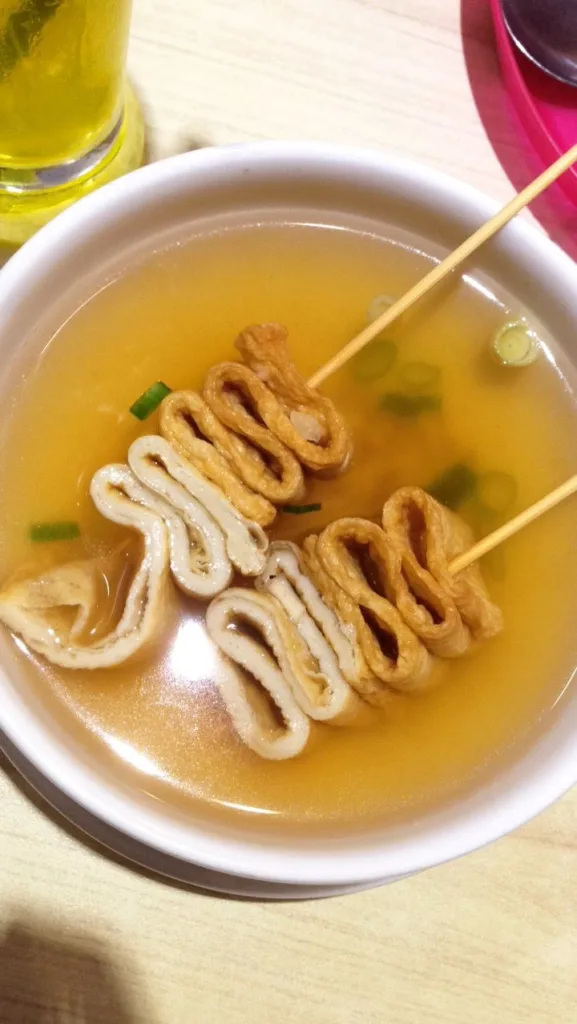
Eomuk, also known as fish cake, is a popular Korean street food with roots tracing back to Busan. It’s made from a paste of groundfish, typically pollock or cod, mixed with starch, seasoning, and sometimes vegetables. The mixture is formed into various shapes like ovals or rectangles, then boiled or steamed until cooked through.
Ssiat Hotteok
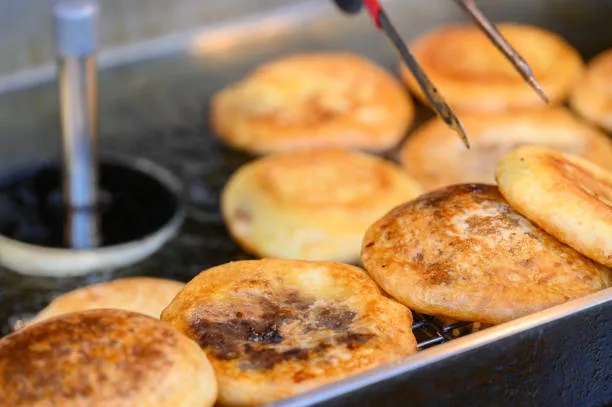
Ssiat Hotteok is a Korean sweet pancake filled with a mixture of brown sugar, honey, and seeds like sunflower or pumpkin. It’s fried until crispy, creating a crunchy exterior with a gooey, sweet center. Served hot, it’s a popular street food snack enjoyed for its irresistible combination of textures and flavors.
Busan Iconic Market’s
Jagalchi Fish Market
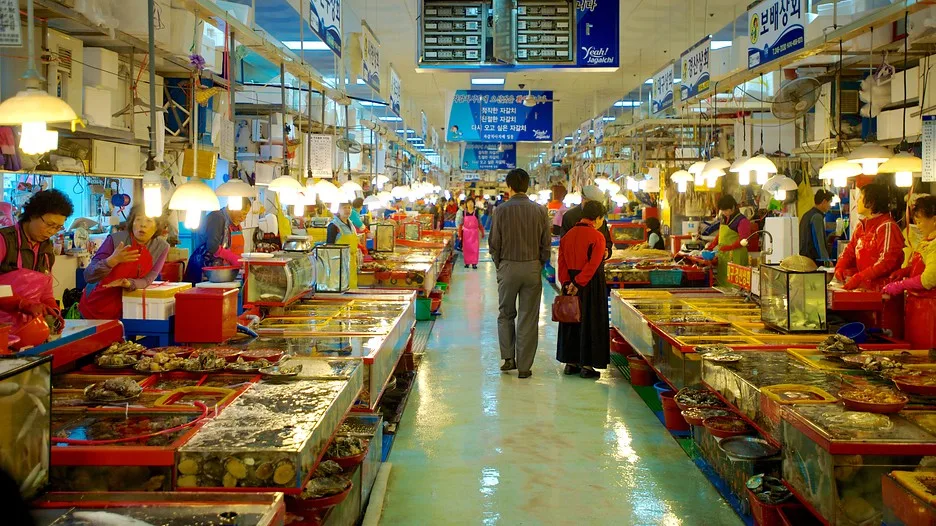
Jagalchi Fish Market, located in Busan, South Korea, is one of the largest seafood markets in the country. It offers a wide variety of fresh fish and seafood, including live fish auctions and an array of restaurants serving delicious dishes prepared with the day’s catch.
Gukje Markets
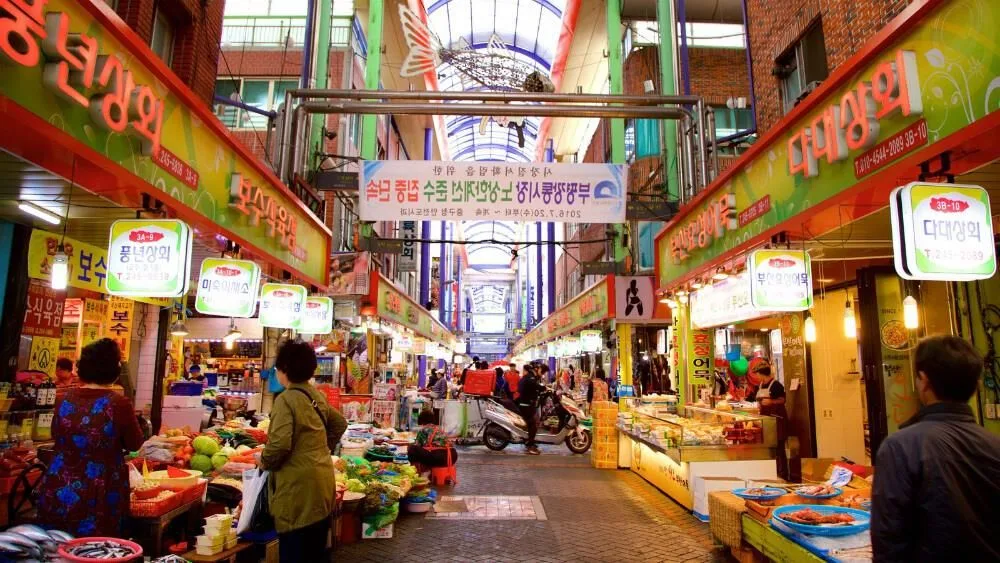
Gukje Market in Busan, South Korea, is not just a place for shopping; it’s a hub of traditional Korean snacks. Wander through its bustling alleys to discover a tantalizing array of street food delights. From crispy hotteok filled with sweet syrup to savory tteokbokki simmered in spicy sauce, every corner offers a new culinary adventure.
Sample freshly made gimbap, savory pancakes, and aromatic fish cakes skewered on sticks. As locals bustle about their daily routines, visitors can indulge in these delectable treats, savoring the flavors and aromas that define Korean cuisine at its most authentic.
Bupyeong Market

Bupyeong Market, nestled in Busan, South Korea, is a bustling hub of commerce and culture. With a history spanning over 70 years, it’s one of the oldest markets in the city. Visitors can wander through its maze of narrow streets lined with colorful stalls, offering an eclectic mix of goods ranging from fresh produce and seafood to clothing, accessories, and household items.
Beyond shopping, Bupyeong Market is renowned for its delectable street food, including savory pancakes, skewered meats, and steaming bowls of noodles. Vibrant, lively, and steeped in tradition, Bupyeong Market is a must-visit destination for locals and tourists alike.
Art of Busan Home Cooking
Recipes Passed Down Through Generations
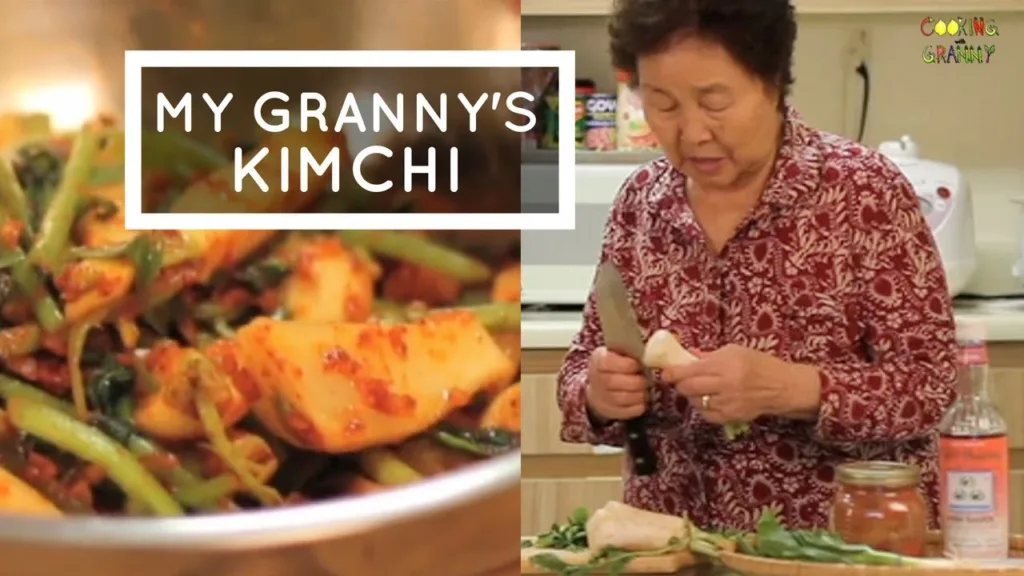
Busan home cooking recipes passed down through generations offer a glimpse into the rich culinary heritage of this coastal city. From hearty stews like dwaeji gukbap (pork soup with rice) to flavorful seafood dishes like milmyeon (cold noodles with beef or pork), these recipes reflect the region’s diverse ingredients and traditional cooking methods. Families in Busan take pride in preserving these culinary treasures, passing them from parents to children, and ensuring that the flavors of their ancestors continue to be enjoyed for generations to come.
Whether it’s the spicy tang of kimchi jjigae (kimchi stew) or the savory sweetness of dongnae pajeon (green onion pancake), Busan’s home-cooking recipes are a testament to the city’s vibrant food culture and the enduring bonds of family and tradition.
Traditional Cooking Techniques and Ingredients
Traditional cooking techniques and ingredients are the backbone of culinary heritage, preserving flavors and cultural identity through generations. In Busan, South Korea, these techniques often include methods like fermentation, boiling, and grilling, which enhance the natural flavors of ingredients. Key ingredients such as gochujang (fermented chili paste), doenjang (soybean paste), and sesame oil lend depth and richness to dishes. Seafood, abundant in Busan due to its coastal location, features prominently, alongside fresh vegetables and fragrant spices. These traditional cooking techniques and ingredients not only create delicious meals but also serve as a link to the past, celebrating the history and traditions of the region.
Festivals Celebrating Busan’s Culinary Heritage
Busan International Seafood Festival
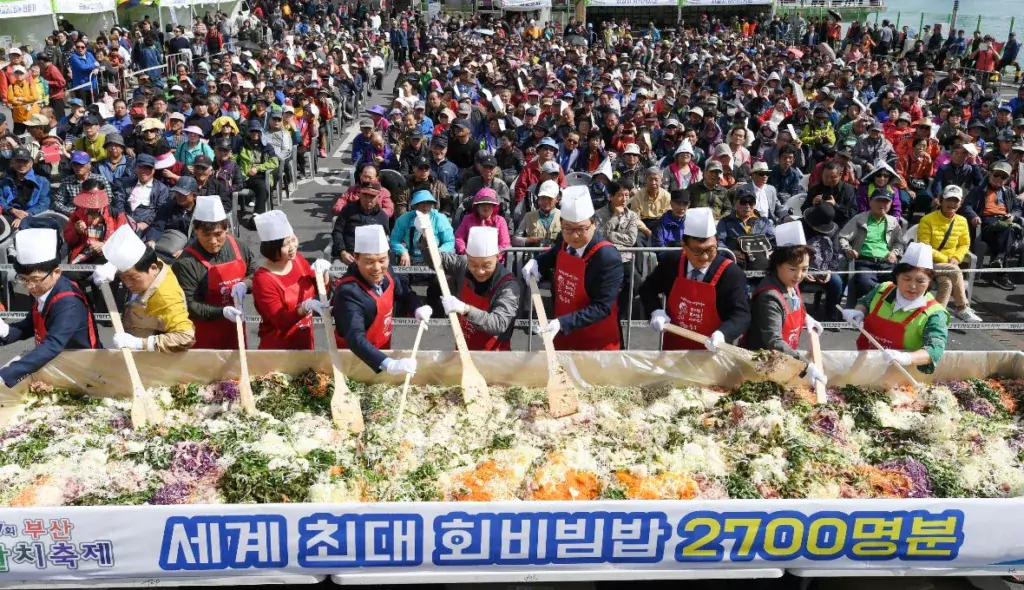
The Busan International Seafood Festival is a celebration of the city’s rich maritime culture and abundance of fresh seafood. Held annually, it brings together locals and visitors to indulge in a variety of culinary delights showcasing the best of Busan’s ocean bounty. From freshly caught fish and shellfish to creative seafood dishes prepared by local chefs, the festival offers a feast for the senses. Attendees can enjoy live cooking demonstrations, seafood tasting sessions, and cultural performances highlighting the importance of the sea in Busan’s history and identity. With its vibrant atmosphere and delicious offerings, the festival is a must-visit for seafood lovers from around the world.
Cultural Significance of Busan’s Food
Food as a Reflection of Busan’s Cultural Identity

Food serves as a poignant reflection of Busan’s cultural identity, deeply rooted in its coastal geography and rich history. The city’s cuisine showcases an eclectic blend of flavors, drawing influence from its maritime heritage and diverse cultural exchanges over the centuries. From hearty seafood stews like dwaeji gukbap to savory pancakes like dongnae pajeon, each dish tells a story of resilience, adaptation, and communal celebration. Busan’s bustling markets, lively street food scene, and traditional recipes passed down through generations embody the city’s spirit of hospitality and culinary innovation. Through its food, Busan proudly honors its past while embracing the dynamic evolution of its cultural identity in the present day.
Rituals and Traditions Associated with Busan Cuisine
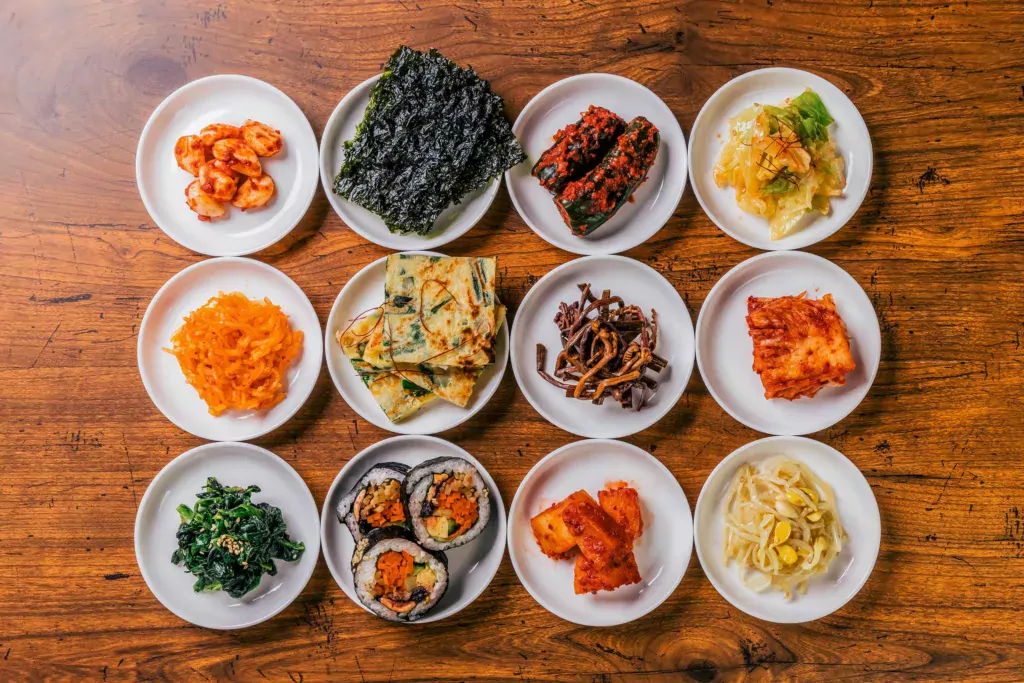
Busan cuisine is steeped in rituals and traditions that reflect the city’s cultural heritage. From the meticulous preparation of seafood dishes to the communal act of sharing meals with loved ones, every aspect of Busan cuisine carries significance. Fishermen’s prayers for a bountiful catch and the meticulous craftsmanship of kimchi-making are deeply ingrained in Busan’s culinary rituals. Traditional ceremonies, such as the offering of ancestral foods during holidays, honor the city’s past and ensure its culinary traditions endure. These rituals not only enrich the dining experience but also serve as a means of preserving Busan’s cultural identity for future generations to cherish.
Busan’s Beverage Culture
Makgeolli: Busan’s Traditional Rice Wine
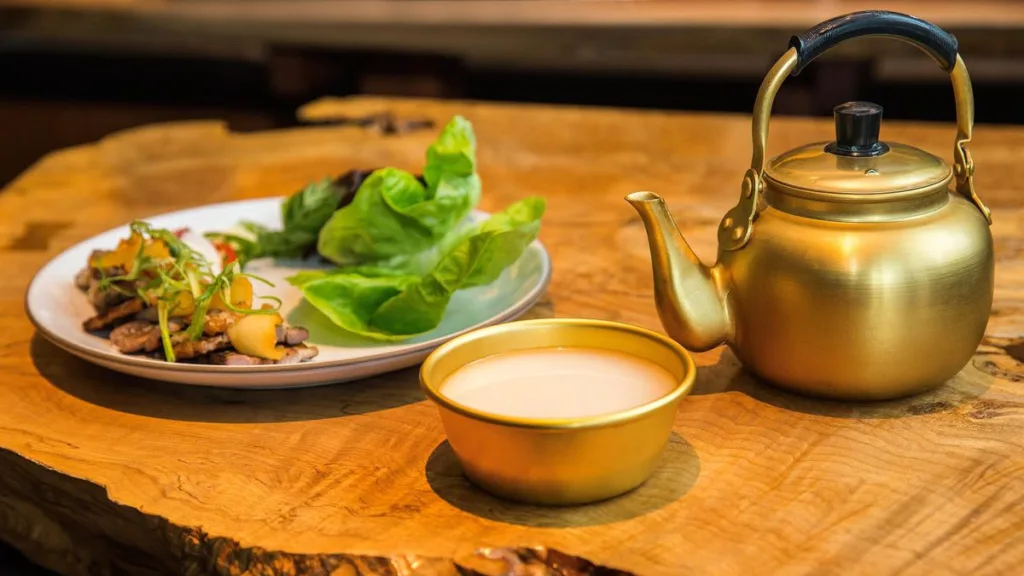
Makgeolli, Busan’s traditional rice wine, holds a special place in the city’s culinary heritage. Made from fermented rice, water, and nuruk (a fermentation starter), makgeolli boasts a milky appearance and a slightly sweet, tangy flavor. It’s often enjoyed as a refreshing beverage alongside Busan’s spicy seafood dishes or as an accompaniment to savory pancakes like pajeon. Makgeolli is not just a drink; it’s a cultural symbol, deeply ingrained in Busan’s social gatherings and traditional celebrations. As locals and visitors alike raise their glasses of makgeolli, they partake in a centuries-old tradition that embodies the essence of Busan’s vibrant culinary culture.
Haejangguk: Hangover Soup to Ease the Morning After
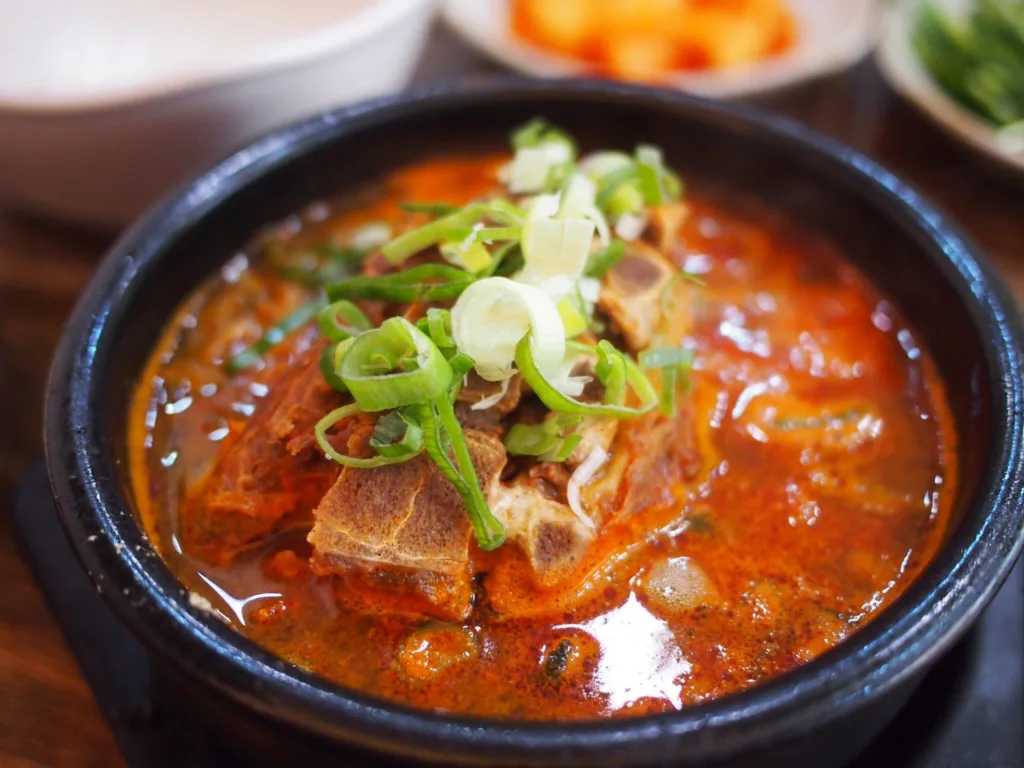
Haejangguk, affectionately known as “hangover soup,” is a beloved remedy in Busan’s culinary culture. This hearty soup is designed to ease the morning after indulging in alcohol, featuring a robust broth filled with nourishing ingredients like beef, vegetables, and spices. The combination of savory flavors and comforting warmth helps to soothe hangover symptoms and replenish lost nutrients. Often enjoyed with a side of rice or kimchi, haejangguk is a staple in Busan’s dining scene, offering locals and visitors alike a comforting remedy to start the day on a revitalized note after a night of revelry.
Summary: Indulge in the Flavors of Busan
Recap of Busan’s Rich Culinary Tapestry
Busan’s culinary tapestry is woven with the flavors of its coastal heritage, vibrant markets, and traditional recipes passed down through generations. From savory seafood stews to spicy rice cakes, each dish tells a story of resilience and cultural exchange, creating a dynamic and diverse dining experience.

